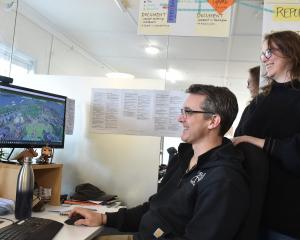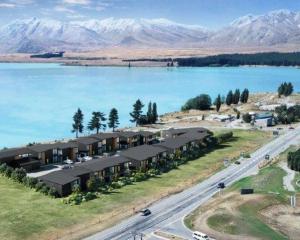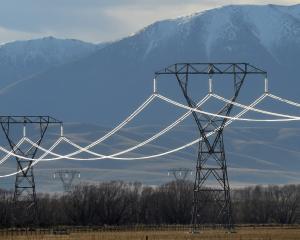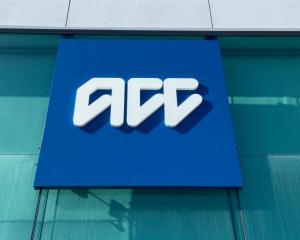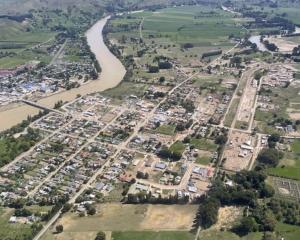The ANZ regional trends measure of composite economic activity increased just 0.3% in the June quarter and 3.5% in the June year, a two-year low.
Activity increased by 0.6% in the North Island in June but fell 0.8% in the South Island.
Half of the 14 regions - including seven of nine North Island regions - recorded an increase in economic activity in June. Activity in all five South Island regions fell.
Last week, the ASB Main Report said Otago had a two-speed economy. Queenstown was racing along, while Dunedin struggled to keep up. Workplace Relations and Safety Minister Michael Woodhouse labelled the ASB report, and comments from the Otago Chamber of Commerce and Otago Southland Employers Association, as unfair and unhelpful.
But this week, the ANZ report showed Otago, Nelson-Marlborough and Taranaki having the largest falls in economic activity. Auckland topped the annual growth stakes, followed by the Bay of Plenty and Northland. The upper North Island is now outperforming the rest of New Zealand.
Labour Party economic development spokesman David Clark told the Otago Daily Times there was a sense of neglect being expressed around regional New Zealand. Many people did not want to speak out about it because it was hard to quantify. One obvious example was all roads of national significance were north of Christchurch. The Government had slashed millions from Otago's roading budget, putting pressure on councils to fund roading through rates, while underinvesting in maintenance and sealing work.
''Under National, just 4km of Otago roads have been sealed. That compares to 174km over the same length of time under Labour.''
Otago received $473 per person in NZTA funding a year compared with $648, on average, nationwide, he said.
Since 2008, one in five manufacturing jobs in Otago had been lost, with no signs of recovery after seven years. Economic activity from manufacturing had fallen by 23%.
The loss of 2000 manufacturing jobs under National had hurt the Otago economy, making it one of the slowest-growing regions in the country.
''The Government should be backing Kiwi firms and Kiwi workers by buying Kiwi-made whenever possible. That will create good jobs in Otago and boost the economy,'' Dr Clark said.
Also, Otago's health needs were being neglected by the Government, which had stood by while the Southern District Health Board had run up large deficits and cut services.
''Dunedin Hospital needs urgent rebuilding. National has waited too long and the cost is ballooning. Cuts to local hospital services are unacceptable.''
The terrible state of Dunedin Hospital and the cuts to rural services were putting Otago people's health at risk and meant they could not easily get the help they needed when they needed it, Dr Clark said.
The ANZ breakout results for Otago reported economic activity fell 1% quarter on quarter after increasing 1.1% in March.
Otago's annual economic growth of 2.8% slipped to the seventh-highest across the regions after consistently outpacing national growth and being in the top four regions since 2013.
ANZ chief economist Cameron Bagrie said the region showed weakness across several business sectors in the June quarter.
Regional exports fell 2.8% in the quarter and were 4.8% higher than a year ago.
The value and volume of commercial consents fell 17.5% and 15.9% respectively in the past three months.
On a more positive note, guest nights and occupancy rates lifted in the June quarter, he said.
Retail activity fell 0.5% in the quarter after a March-quarter decline. Annual retail activity was up 1.5% on a year ago.
House sales volumes rose a modest 1.5% in the past three months, while section and farm sales fell sharply. House prices also fell, by only 0.4%, but were down 18.4% on a year ago. However, both the number of dwelling consents and values lifted in the June quarter, Mr Bagrie said.
Otago's unemployment rose 0.6% to 4.2% but was still the third-lowest across all regions. Employment in the region fell 1.9% in June and was 1.7% higher than a year ago. Despite this, internet job advertisements were up 10% in the past 12 months.
The news was worse for Southland, which suffered the largest percentage drop, 1.6%, of any region in the quarter. Contributing to the fall in regional activity were lower readings for business and consumer confidence, he said.
At a glance
- Otago economic activity falls 1% in June quarter.
- Southland economic activity falls 1.6% in June quarter.
- All five South Island regions have slowing economic growth.
- Seven of nine North Island regions have growing economies.






